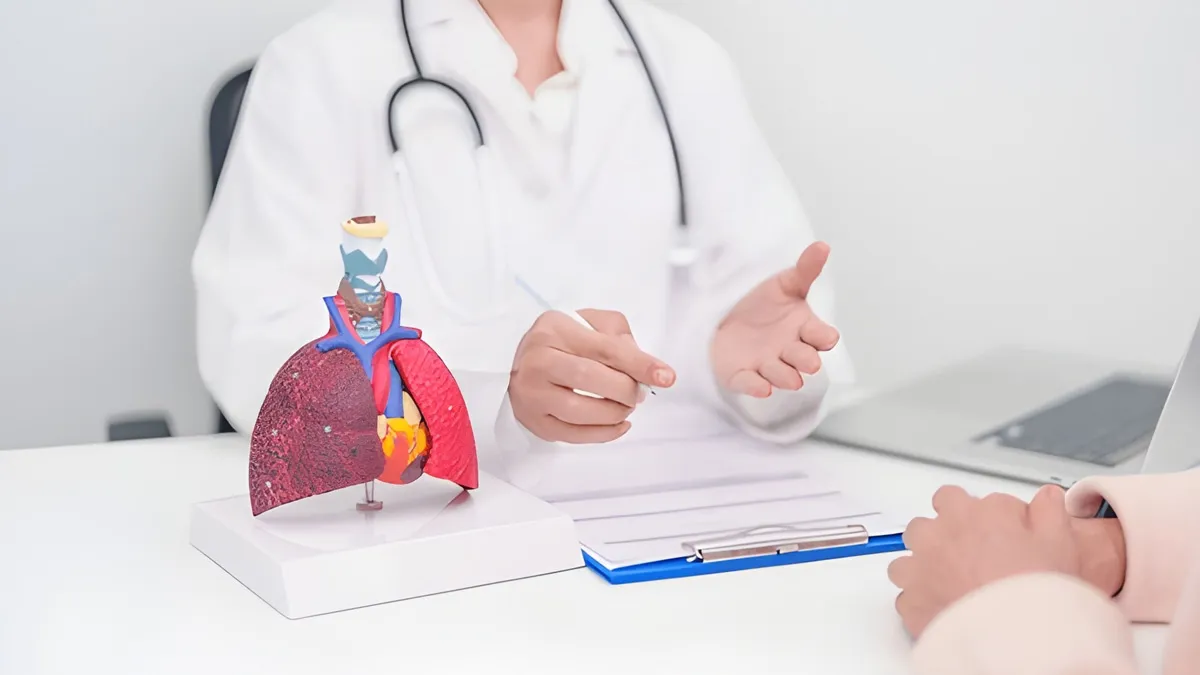
Pneumonia remains one of the most common yet challenging respiratory infections to diagnose accurately, especially at the two age extremes — children and the elderly. While the underlying infection affects the lungs in both groups, the way it presents, progresses, and responds to treatment can differ greatly. In children, symptoms often appear suddenly and may include high fever, rapid breathing, and irritability, whereas in older adults, signs can be subtle or atypical, such as confusion, fatigue, or a mild cough without fever. These variations make timely diagnosis crucial to prevent complications.
This article is authored by Dr. Vikas Mittal, Director – Pulmonologist at the CK Birla Hospital, Delhi, and Dr. LakshmiPriya R, Senior Consultant Microbiologist and Molecular Biologist, Metropolis Healthcare Limited.
Inputs by: Dr Vikas Mittal, Director – Pulmonologist at the CK Birla Hospital, Delhi
Pneumonia can affect people of all ages, but both children and the elderly are particularly vulnerable due to their relatively weaker immune systems. However, the way pneumonia presents in these two groups often differs significantly.
In children, pneumonia typically shows clear and noticeable symptoms. These include fever, rapid breathing, shortness of breath, and chest retractions, often accompanied by nasal flaring. Parents may also observe poor feeding, lethargy, or irritability in affected children. The symptoms are usually respiratory in nature, making pneumonia easier to identify and diagnose in this age group.

In contrast, elderly adults may present with less obvious respiratory symptoms. While they might have a low-grade fever, cough, or mild breathlessness, they often display non-specific signs such as confusion, generalized weakness, frequent falls, or worsening of existing conditions like diabetes or heart disease. These subtle symptoms can mask the underlying infection, making diagnosis more challenging.
Therefore, while children typically exhibit more direct indicators of pneumonia, diagnosing the illness in the elderly requires a higher index of suspicion. Recognizing these age-specific differences is crucial for timely intervention and effective management, helping prevent complications in these vulnerable populations.
Don't miss: Top 5 Foods That Can Damage Your Kidneys If Eaten Excessively
Inputs by Dr LakshmiPriya R, Senior Consultant Microbiologist and Molecular Biologist, Metropolis Healthcare Limited
Pneumonia remains one of the most serious infections affecting both young children and older adults, but the way it manifests and is diagnosed differs greatly between these two groups. In children, pneumonia usually presents with clear respiratory symptoms, rapid breathing, fever, chest retractions, or nasal flaring, which make it easier to recognize clinically. Their illness can progress rapidly because of their developing immune systems, making early detection and prompt treatment crucial.

In contrast, pneumonia in the elderly is often far more subtle and easily overlooked. Older adults may not always have a high fever or a productive cough; instead, they may show vague symptoms such as confusion, fatigue, loss of appetite, or a sudden worsening of pre-existing conditions like diabetes or heart disease. These atypical presentations require a higher index of suspicion from clinicians.
Don't miss: Seasonal Fever, Flu or Covid-19? How to Tell the Difference, Expert Explains
Diagnostic approaches also vary, while children are diagnosed mainly through clinical signs and simple tools like pulse oximetry, elderly patients often need imaging and laboratory tests to confirm infection due to overlapping chronic illnesses. Recognizing these age-specific differences is essential for timely intervention. Awareness, vaccination, and vigilance remain our strongest defenses against pneumonia’s silent threat.
Image credit: Freepik
Also watch this video
Herzindagi video
Our aim is to provide accurate, safe and expert verified information through our articles and social media handles. The remedies, advice and tips mentioned here are for general information only. Please consult your expert before trying any kind of health, beauty, life hacks or astrology related tips. For any feedback or complaint, contact us at [email protected].